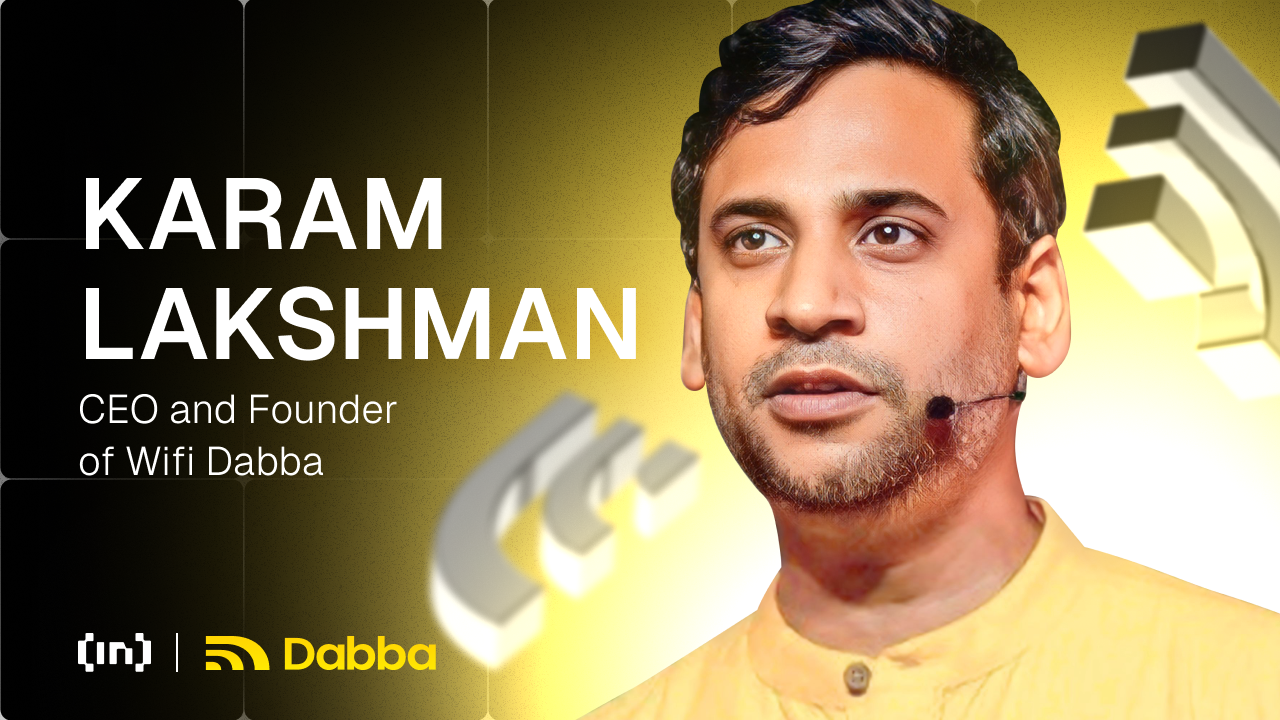Wifi Dabba CEO Karam Lakshman on Using BONK and DePIN to Help Connect India

According to Wifi Dabba CEO and founder Karam Lakshman, India’s rapid digital growth has outpaced its broadband infrastructure, leaving hundreds of millions without stable access. He believes decentralized networks may offer a way to bridge that gap, using global capital, local deployment partners, and tokenized incentives to scale internet access cost-efficiently.
Wifi Dabba is putting that belief into practice. After seven years of operating in India’s broadband space, the Bangalore-based provider is now repositioning itself as a decentralized physical infrastructure network, or DePIN project.
In a recent interview with BeInCrypto, Lakshman discussed the company’s latest initiative to partner with BONK, one of Solana’s most active communities. Through this collaboration, Wifi Dabba aims to deploy 10,000 decentralized Wi-Fi hotspots across underserved regions in India.
A Network Too Big to Scale the Old Way
India is the world’s second-largest telecom market, with more than 800 million 4G and 5G subscribers. Yet when it comes to broadband, the country lags behind. Lakshman points out that while the United States has over 120 million broadband connections and China has more than 600 million, India counts only about 40 million.
“India developed rather quickly in the last 20 years, and we skipped the broadband step,” he said. “So there’s this mad race that’s happening now in India to build broadband networks.”
Wifi Dabba’s early work included powering segments of Google public Wi-Fi programs and helping the Indian government shape national telecom policy. But as the company expanded its own branded network, Lakshman said they discovered just how limited broadband access really was.
“We didn’t realize that the stat was so bad. Only five percent of India has broadband internet. We really thought most people did. So to us, that was the biggest eye-opener,” Lakshman told BeInCrypto.
In response, Dabba restructured its model around a decentralized deployment system powered by tokenized incentives. The premise is straightforward. Anyone in the world can purchase a Dabba Lite hotspot, and instead of receiving the device themselves, the company installs it in a home or office in India where there’s real demand.
“By decoupling the person that owns the hotspot from where the hotspot is going to be deployed, we do two incredibly powerful things. The first is it allows us to match supply and demand more efficiently because we’re deploying only in places where people need it and are willing to pay for it. The second is that the person buying the hotspot, like someone sitting in the US, ends up subsidizing the cost of that internet connection for someone in India,” he explained.
What Crypto Looks Like When the End User Doesn’t Know It’s There
For the person receiving internet access, Dabba’s system doesn’t feel like crypto at all. It’s a standard broadband connection, paid in fiat, installed in their home or business. What stands out to users is the price. Dabba’s service can be three to ten times cheaper than other options.
Some grow curious after noticing the discount. Dabba shares a small portion of its native token with users, which they can use for future discounts or trade on a decentralized exchange. For many, it becomes their first interaction with crypto. This time, it’s tied directly to a useful service.
Lakshman put it simply. “For the people who are curious, they learn what crypto is through a real benefit. For the people who aren’t, they just get a cheap, reliable broadband connection. And they’re happy.”
A Meme Coin Meets a Connectivity Mission
This model, which lets global participants fund local connectivity, is now being tested at scale through a new campaign with BONK. Earlier this month, the company launched a collaboration with BONK, a Solana-based meme coin project with a large and engaged user base.
The campaign will see 10,000 Dabba Lite hotspots reserved for BONK participants. Each device will trigger a $20 burn in BONK tokens at activation, followed by monthly $2 burns over 18 months.
Although the choice to work with BONK might seem unconventional at first glance, Lakshman sees it as a strategic step toward bringing DePIN to a broader audience.
“We took a long look at how to increase awareness of DePIN within the broader crypto community. Most people in the space haven’t even heard of it. Our strategy is to expand to one vertical at a time, and communities were the first,” Lakshman outlined.
According to Lakshman, BONK stood out for its long-term focus and surprising depth of utility. He pointed to existing BONK-backed projects and tools like BONKbot and Bonkler, as well as the community’s role in driving Solana Saga phone adoption. But scale was also a factor.
“BONK has almost a million wallet holders, and they’ve proven they know how to get a message across. If one of the biggest challenges in DePIN is awareness, BONK gives us distribution.”
The partnership ties token burns directly to real-world usage. BONK is only burned when a hotspot is deployed and data is consumed. This mechanism, Lakshman said, creates a clear link between network activity and token utility.
“We wanted to attract people who care about long-term utility. When a BONK holder sees tokens being burned only when the internet is being used, it shows that real work is being done. It connects utility with belief.”
Disclaimer
In compliance with the Trust Project guidelines, this opinion article presents the author’s perspective and may not necessarily reflect the views of BeInCrypto. BeInCrypto remains committed to transparent reporting and upholding the highest standards of journalism. Readers are advised to verify information independently and consult with a professional before making decisions based on this content. Please note that our Terms and Conditions, Privacy Policy, and Disclaimers have been updated.



